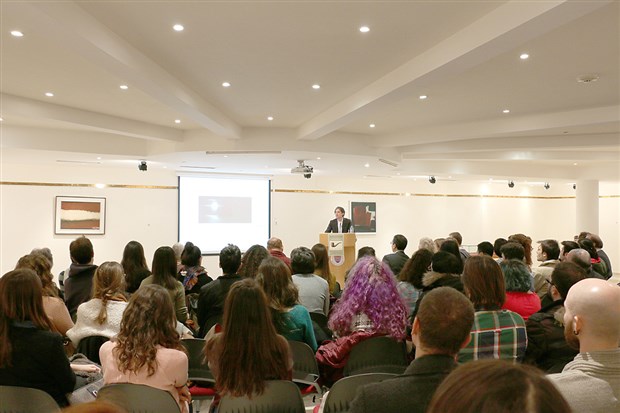The final Library Lunchtime Lecture for the semester took place last week, on December 16, at the Library Art Gallery. Assoc. Prof. Hüseyin Boyacı of the Department of Psychology gave a talk titled “Reality Constructed: How Does the Visual System Work?”
In his talk, Dr. Boyacı explained that while we perceive the world around us effortlessly, in fact this simplicity and triviality delude us into believing firmly that what we perceive is the absolute physical reality. However, for various reasons, what we perceive is only a useful interpretation of what is really out there. First of all, our vision is limited in its capacity to process the visual input impinging on our retinas: we can see only a limited portion of the electromagnetic spectrum; we have limited spatial acuity; and we are visually sensitive to only a limited range of speeds. Moreover, even within the limits of what we can see, all that the visual system can rely on is a pair of inherently ambiguous retinal images.
Dr. Boyacı gave examples that illustrate the difficulties the visual system faces when interpreting visual input, discussed behavioral and neuronal methods used to study how vision deals with ambiguities, and surveyed some of the important empirical findings and theoretical models in vision research.
He concluded by emphasizing the importance of studying vision as a model for better understanding the human brain.

